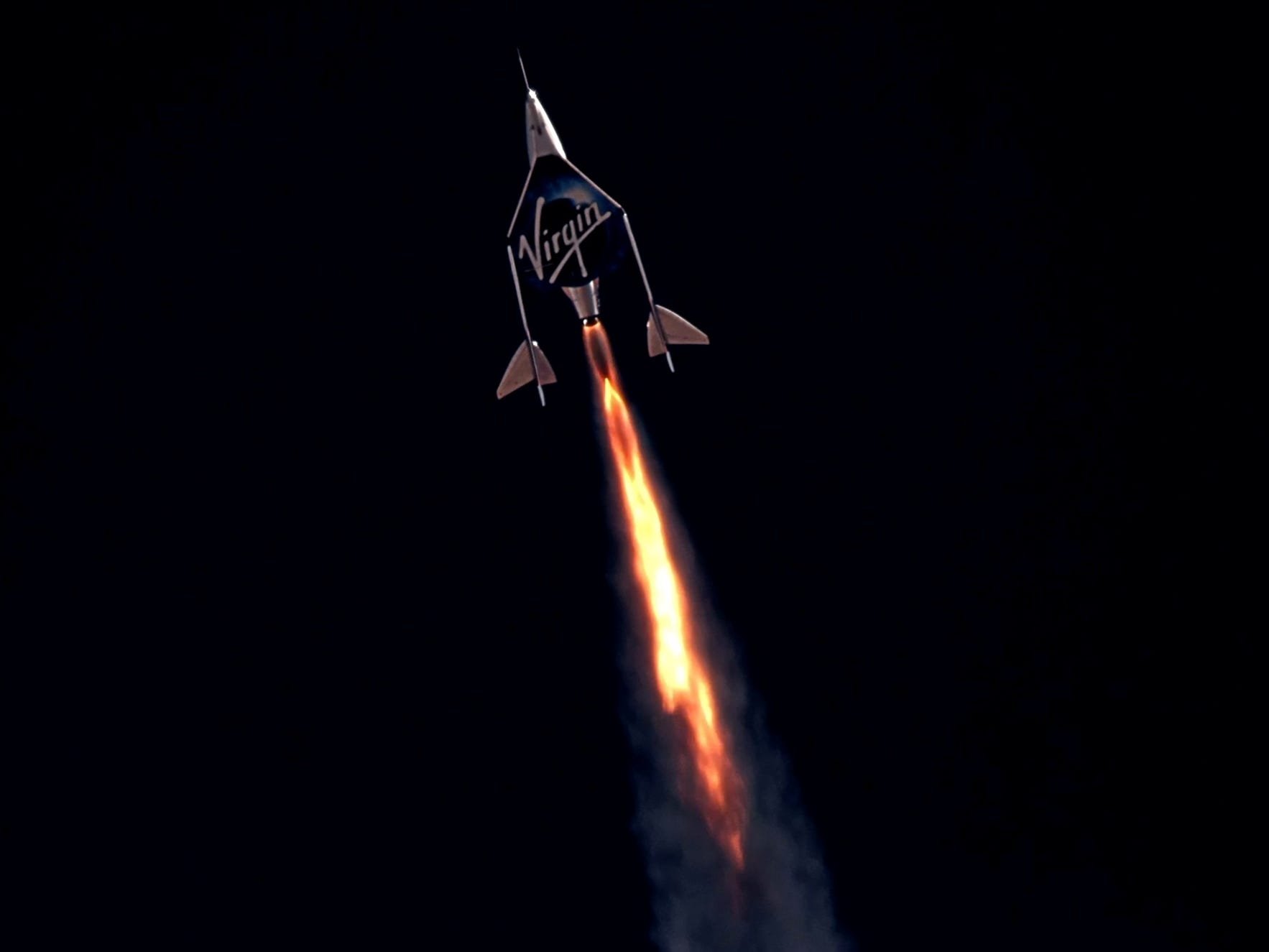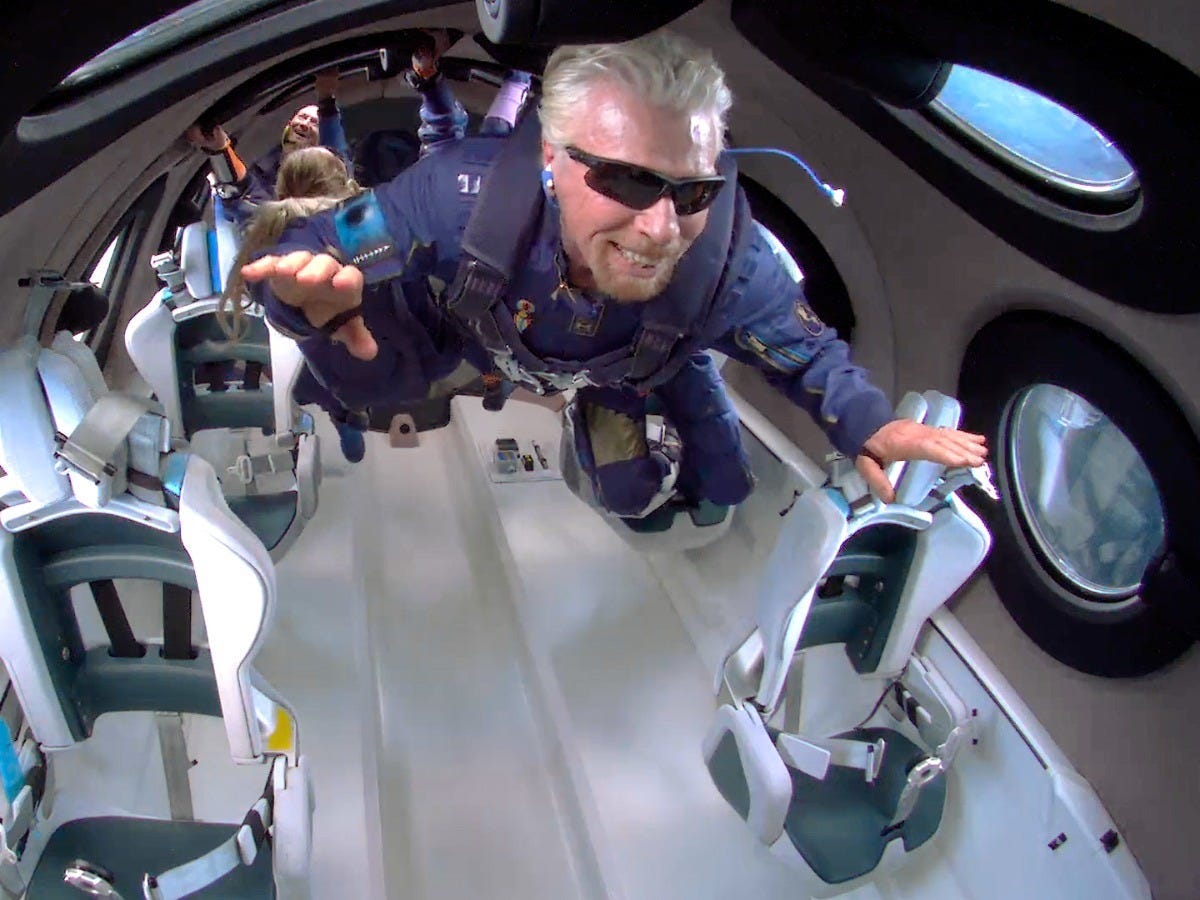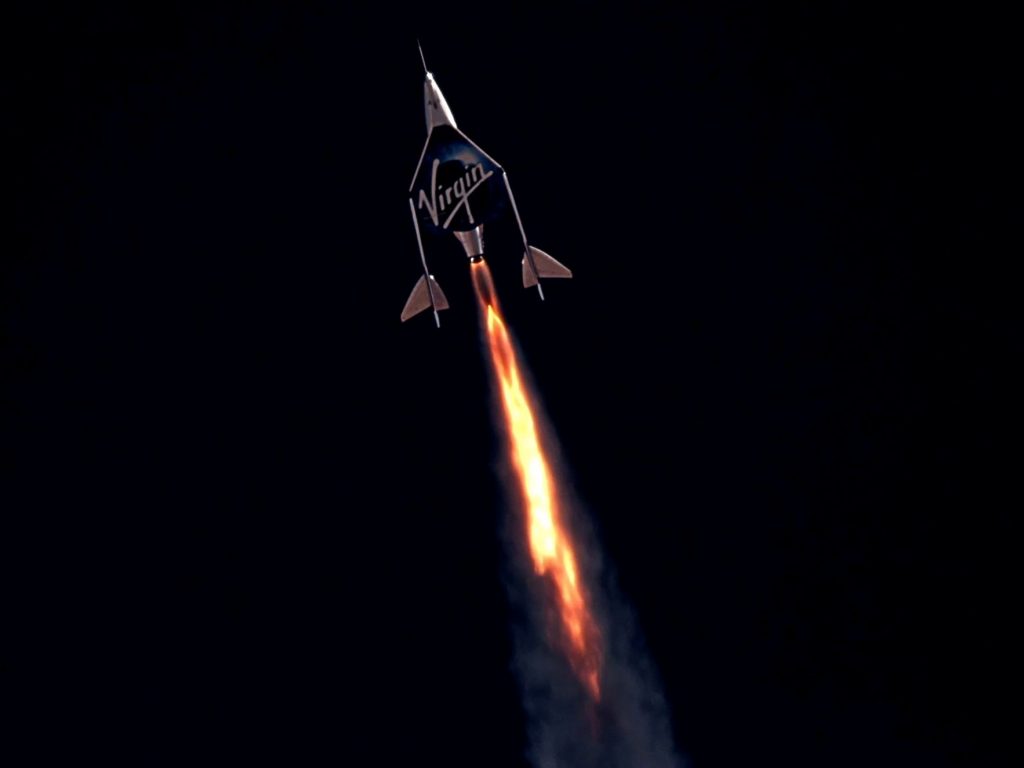
Virgin Galactic via Reuters
- Richard Branson's flight to the edge of space has triggered an FAA investigation, The New Yorker reported.
- A red light on the pilots' console warned that the spaceship could fly out of bounds on its descent.
- Virgin Galactic's pilots kept flying, and the ship left its airspace clearance zone on its return.
- See more stories on Insider's business page.
As Richard Branson was screaming towards the edge of space aboard a Virgin Galactic rocket plane, a red warning light came on in the cockpit.
The New Yorker's Nicholas Schmidle reported Wednesday that Branson's spaceflight on July 11 didn't go as smoothly as it seemed. The plane didn't climb to space steeply enough, ultimately causing it to deviate from its approved flight path on its way back to Earth.
The space plane's pilots, Dave Mackay and Mike Masucci, corrected the error enough to fly and land safely, but in the process, they flew outside their airspace clearance zone for a total of one minute and 41 seconds, according to The New Yorker. As a result, the Federal Aviation Administration is investigating the incident.
In a statement emailed to Insider, an FAA spokesperson said: "During its July 11, 2021 flight, the Virgin Galactic SpaceShipTwo vehicle deviated from its Air Traffic Control clearance as it returned to Spaceport America. The FAA investigation is ongoing."
Virgin Galactic disputed the New Yorker report, calling it "misleading" in a statement to CNBC reporter Michael Sheetz. The company did not, however, immediately reply to Insider's request for comment.
"At no time were passengers and crew put in any danger as a result of this change in trajectory," the company told Sheetz. "At no time did the ship travel above any population centers or cause a hazard to the public."
Virgin Galactic's pilots kept flying instead of an emergency landing

Virgin Galactic
Schmidle spoke to eight people with knowledge of Virgin Galactic's spaceflight program, according to his New Yorker article. Those sources told him that the first sign of trouble came when a yellow caution light appeared on the pilots' console as Virgin Galactic's space plane was ascending at more than twice the speed of sound.
The light indicated that the spacecraft was veering slightly off course - enough to affect its path back down to Earth. According to Schmidle, the plane must fall towards the ground within a particular "entry glide cone" in order to reach the runway where it must land.
The yellow light indicated that the plane's upward trajectory wasn't steep enough, so it risked venturing outside its cone. Then, the New Yorker reported, a more urgent red light replaced the yellow one.
Earlier discussions between Virgin Galactic pilots suggest that this was a serious issue, according to Schmidle.
"Red should scare the crap out of you," Masucci said in a meeting that Schmidle attended in 2015.
CJ Sturckow, another Virgin Galactic test pilot who is a former NASA astronaut, took it a step further. Even a yellow light should "scare the shit out of you," Sturckow said, according to Schmidle, because "when it turns red, it's gonna be too late."
In its statement to CNBC, Virgin Galactic said "high altitude winds" changed its spaceship's trajectory.
"Our pilots responded appropriately to these changing flight conditions exactly as they have been trained and in strict accordance with our established procedures," the statement said.
Overall, the company added, this was "a safe and successful test flight that adhered to our flight procedures and training protocols."
But the New Yorker reported that sources at the company said the safest course of action would have been for Mackay and Masucci to abort the flight once they saw that red light. It's not clear why the pilots chose to continue flying instead.
There was a lot riding on this event: Virgin Galactic had widely publicized it, was livestreaming it with Stephen Colbert as the host, and was flying its founder-CEO (Branson) for the first time.
The FAA does not regulate passenger safety for commercial spaceflight. For now, the agency's job is only to ensure the safety of people on the ground and of other aircraft. A rocket that ventures outside its airspace-clearance zone could pose a risk to both.
Even when a spaceflight itself is regulated, though, it's risky for the people onboard. About 1% of US human spaceflights has resulted in a fatal accident, according to an analysis published earlier this year. That's about 10,000 times more dangerous than flying on a commercial airplane.
Branson's trip was one of Virgin Galactic's final test flights of its space plane. The company plans to start flying paying customers next year.

